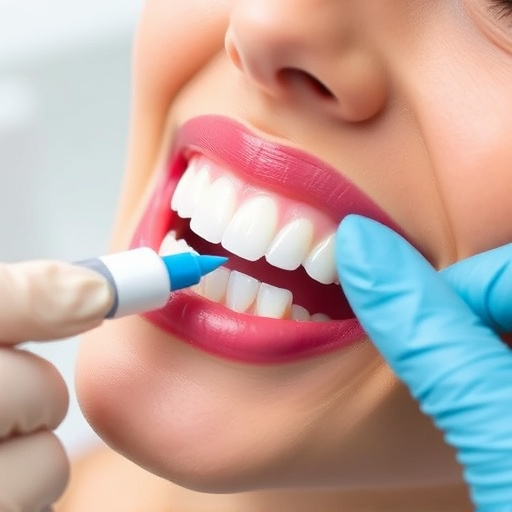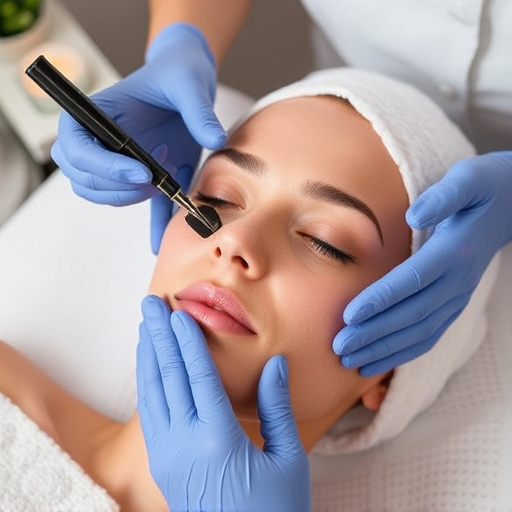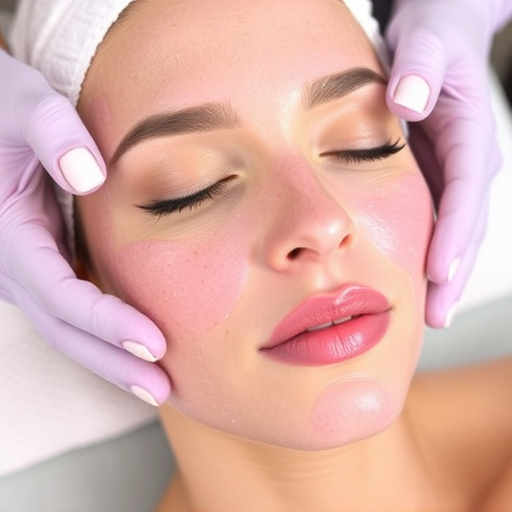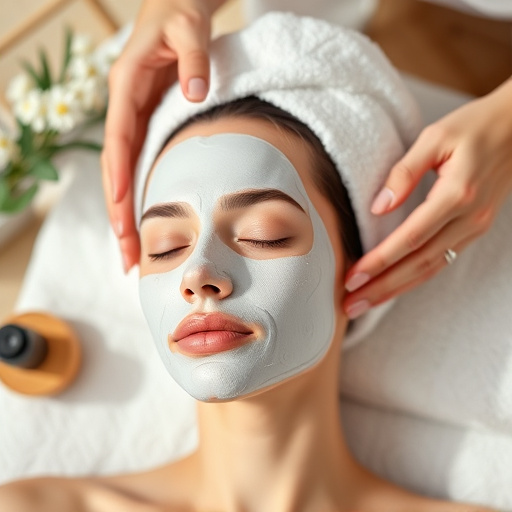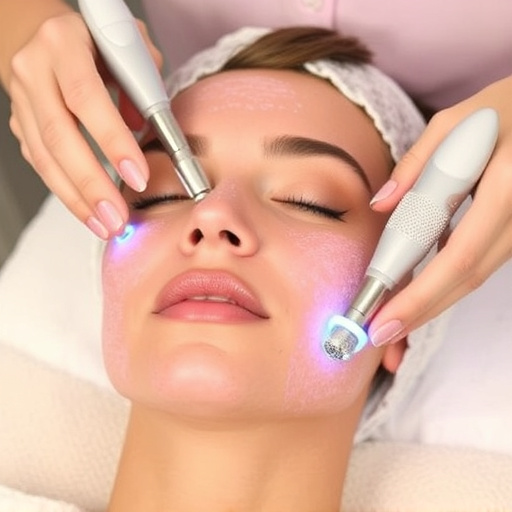Hyperpigmentation, caused by melanin overproduction, has various types (melasma, post-inflammatory, age spots) and triggers. Treatments range from topical Vitamin C/niacinamide to microneedling, laser therapy, and sunscreen use. Tailoring the hyperpigmentation treatment to skin type and cause is key; gentle options for sensitive skin include topicals, while chemical peels and lasers target oily or combination skin. Consistent application of protective measures alongside targeted therapies is vital for successful hyperpigmentation management.
“Unveil your radiant skin with our comprehensive guide to hyperpigmentation treatment, catering to diverse skin types. Hyperpigmentation, characterized by darker patches, can be a concern for many, but safe and effective solutions exist.
We explore the causes and various types of this common skin issue, offering insights into tailored treatments for different complexions. From targeted topicals to professional procedures, discover a range of options. Learn expert tips to choose the right hyperpigmentation treatment approach, ensuring your skin’s unique needs are met.”
- Understanding Hyperpigmentation: Causes and Types
- Safe and Effective Treatment Options for Different Skin Complexions
- Choosing the Right Approach: Tips for Customized Hyperpigmentation Management
Understanding Hyperpigmentation: Causes and Types
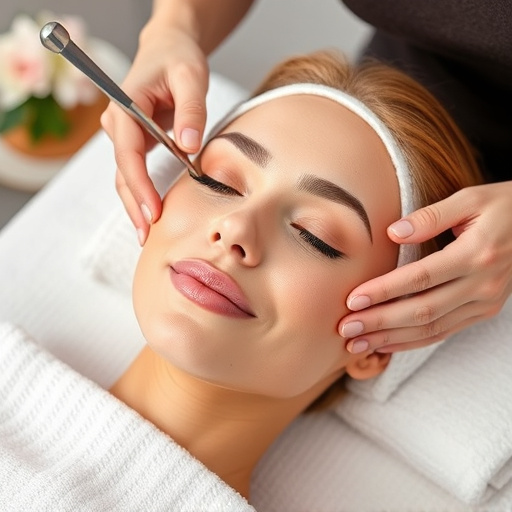
Hyperpigmentation is a common skin concern characterized by dark patches or spots that appear on certain areas of the face or body. It occurs when melanin, the pigment responsible for skin color, becomes overproduced in specific regions, leading to an uneven complexion. Understanding hyperpigmentation involves recognizing its various types and causes.
There are several factors that can contribute to the development of hyperpigmentation. One primary cause is sun exposure, where ultraviolet (UV) radiation triggers melanin production, often resulting in sunspots or age spots. Hormonal changes, certain medications, and skin injuries or inflammations can also lead to hyperpigmentation. Different types include melasma, a hormonal imbalance-related condition, post-inflammatory hyperpigmentation from acne or wounds, and age spots, which are common as we age due to cumulative sun damage. Each type may require specific approaches for effective hyperpigmentation treatment, such as targeted topicals, professional procedures like microneedling therapy, or skin tightening techniques, depending on the severity and underlying cause.
Safe and Effective Treatment Options for Different Skin Complexions
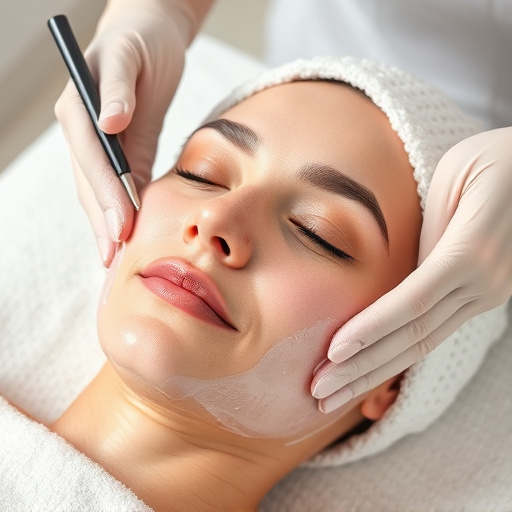
When it comes to addressing hyperpigmentation safely and effectively, a tailored approach is key, taking into consideration individual skin types and concerns. For those with sensitive skin, topical treatments are often the best bet. Ingredients like Vitamin C, niacinamide, and kojic acid are powerful yet gentle alternatives that can help lighten dark spots without causing irritation. These options work by inhibiting tyrosinase, an enzyme responsible for melanin production, thereby reducing the appearance of hyperpigmentation.
For individuals with oily or combination skin, a more comprehensive strategy is recommended. Incorporating chemical peels and targeted laser therapy into a personalized skincare routine can deliver remarkable results. Professional skincare treatments offer deeper penetration to target not just surface spots but also the underlying causes of hyperpigmentation. These advanced techniques often combine elements like glycolic acid, salicylic acid, or laser energy to gently exfoliate, unclog pores, and stimulate collagen production, leading to improved skin texture and a more even complexion.
Choosing the Right Approach: Tips for Customized Hyperpigmentation Management
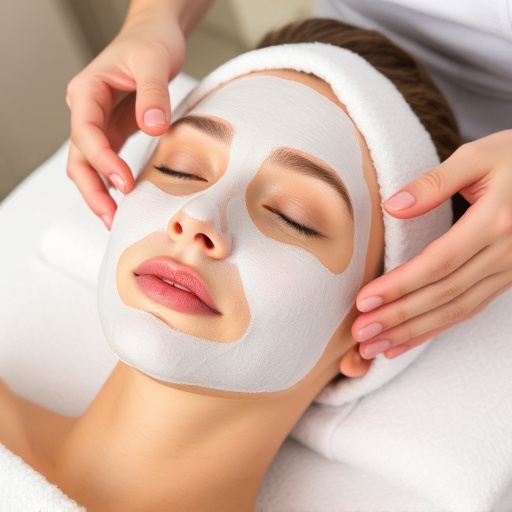
Choosing the right approach for hyperpigmentation treatment is key to achieving and maintaining healthy, even skin. Understanding your skin type and the specific cause of hyperpigmentation is essential in tailoring a customized management plan. For instance, while non-surgical treatments like chemical peels and microdermabrasion can be effective for some, they may not suit sensitive skin types. In such cases, targeted topical creams with ingredients like Vitamin C or retinoids could be a safer alternative for gradual, gentle skin rejuvenation.
Additionally, lifestyle factors play a significant role in managing hyperpigmentation. Protecting your skin from excessive sun exposure is crucial as UV rays can further darken pigmented areas. Incorporating broad-spectrum sunscreen into your daily routine ensures skin health and prevents the progression of hyperpigmentation. Remember, consistency is key; whether using topical treatments or adopting protective measures, persistence will yield better results in the long term.
Hyperpigmentation can affect people of all skin types, but with the right approach, it’s manageable. By understanding the causes and various types of hyperpigmentation, you can choose safe and effective treatments tailored to your skin complexion. Whether you opt for topical creams, chemical peels, or laser therapy, a customized management plan will help even out skin tone and restore confidence. Remember, consistency is key, so stick with your chosen treatment routine for best results in achieving a radiant, pigment-free complexion.




